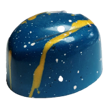-
Welcome to the eG Forums, a service of the eGullet Society for Culinary Arts & Letters. The Society is a 501(c)3 not-for-profit organization dedicated to the advancement of the culinary arts. These advertising-free forums are provided free of charge through donations from Society members. Anyone may read the forums, but to post you must create a free account.
Home Made Ice Cream (2013– )
-
Similar Content
-
- 1,005 replies
- 127,441 views
-
- 905 replies
- 170,743 views
-
- 81 replies
- 20,573 views
-
- 83 replies
- 4,395 views
-
- 19 replies
- 3,567 views
-
-
Recently Browsing 0 members
- No registered users viewing this page.



Recommended Posts